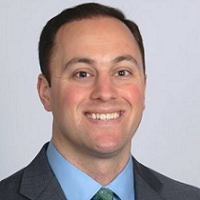 By Chris Emper, Government Affairs Advisor, NextGen Healthcare
By Chris Emper, Government Affairs Advisor, NextGen Healthcare
LinkedIn: Chris Emper
LinkedIn: NextGen Healthcare
On April 22, the Centers for Medicare and Medicaid Services (CMS) released an 895-page final regulation titled, “Medicaid and Children’s Health Insurance Program (CHIP) Managed Care Access, Finance, and Quality.” The regulation applies to Medicaid managed care plans with CMS’s goal being to “improv[e] access to care, accountability and transparency for the more than 70 percent of Medicaid and CHIP beneficiaries who are enrolled in a managed care plan.”
At nearly 900-pages in length, this rule creates a list of new compliance obligations for managed care plans, including a provision that expands network adequacy requirements to create appointment wait time standards.
Maximum appointment wait time standards
Starting in 2027, the rule establishes the following new appointment wait time standards for Medicaid plans:
- Routine primary care (adult and pediatric): 15 business days
- Routine obstetric/gynecological services: 15 business days
- Outpatient mental health and substance use disorder services (adult and pediatric): 10 business days
These standards are very similar to the requirements for Affordable Care (ACA) individual market insurance plans that are set to take effect for the first time in 2025. In addition to these three standards, states must also establish a fourth appointment wait time standard for a state-selected service.
Enforcement will fall to the states, but states will be required to use “an independent entity to conduct annual secret shopper surveys to validate managed care plans’ compliance with appointment wait time standards and the accuracy of provider directories to identify errors and providers that do not offer appointments.” Furthermore, states must hold plans to a 90 percent compliance standard (i.e. the secret shopper surveys must find 90 percent of a plan’s providers are in compliance with the wait time standards).
Potential industry impact
Physicians and other healthcare providers, not health plans, schedule and deliver patient appointments. Thus, even though these rules only create direct compliance requirements for payers, compliance with the rules’ provisions can only be measured via provider adherence. As a result, Medicaid plans will have to work with the providers in their network to ensure their own compliance.
There are several ways plans could potentially do this, but increasing provider payment rates may be the simplest option, especially given Medicaid’s historically low payment rates and shortage of providers. Another option will be expanding provider networks by adding new provider groups that can meet the rule’s mandates. Regardless of a plan’s specific strategy, the overall focus will be on partnering with provider groups that have the capacity to see patients within these timeframes. For provider groups, this places an added emphasis on patient access and ensuring that patient appointment scheduling is an efficient and timely process.
Many practices are finding relief by providing patients with self-scheduling options via a patient portal.
This article was originally published on the NextGen Healthcare blog and is republished here with permission.
